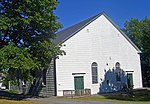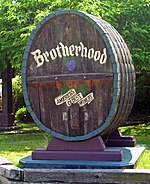On April 21, 2015, the remains of a woman found in South Blooming Grove, New York, were identified as those of Ramona Moore. The 21-year-old woman had last been seen on July 31, 2012, re-entering her apartment in a house near Crotona Park in the Bronx, New York City. In 2014, New York City police had charged her building superintendent, Nasean Bonie, with her murder although there was no body.Bonie had been suspected of killing Moore from the beginning of the investigation into her disappearance. Her friends said that Moore had been having a dispute with him over her rent payments. On the night she was last seen, circumstantial evidence suggests he might have been disposing of a body. After a 2013 police search of the basement of Moore's apartment, Bonie filed a lawsuit alleging that the police stole money from him. He has since claimed he was charged with Moore's murder in retaliation.
In 2014 Bonie was arrested in Pennsylvania by federal marshals. At the time, he reportedly claimed that the absence of a body precluded any murder charges against him. His trial, which would have been the first murder trial in the history of Bronx County without the decedent's body in evidence, was scheduled to begin in April 2015, days after Moore's body was found. Bonie's trial was postponed while medical examiners determined Moore's cause of death. At the time Moore disappeared, Bonie was facing assault charges for an attack on his wife that left her seriously injured. Shortly after Moore's body was discovered, Bonie was convicted and sentenced to four years in prison for the attack on his wife.The defense has obtained city records showing that Moore was up to date in her rent payments. Prosecutors clarified that the dispute was not about the rent but rather a scheme by Bonie to increase those payments by coercing Moore to file false documentation that would have boosted her Section 8 subsidies. To bolster this theory, in late 2015 they subpoenaed the unedited footage from an interview Bonie gave to a local cable channel that had closely covered the case. The cable channel has vigorously opposed giving up the footage to the police. It is appealing the judge's decision requiring them to let him review footage and release relevant portions to the police. A month-long trial in July 2016 ended with the jury acquitting Bonie of murder charges but convicting him of the lesser included charge of manslaughter.











